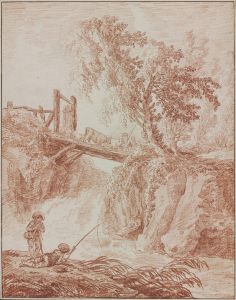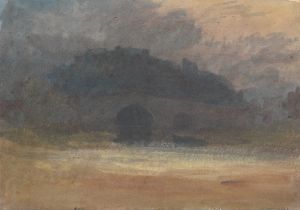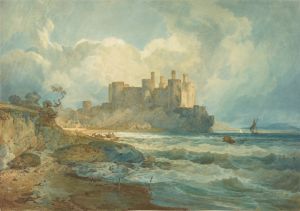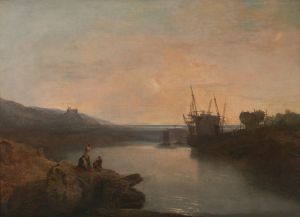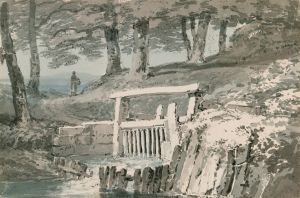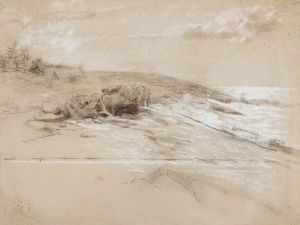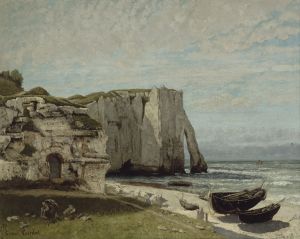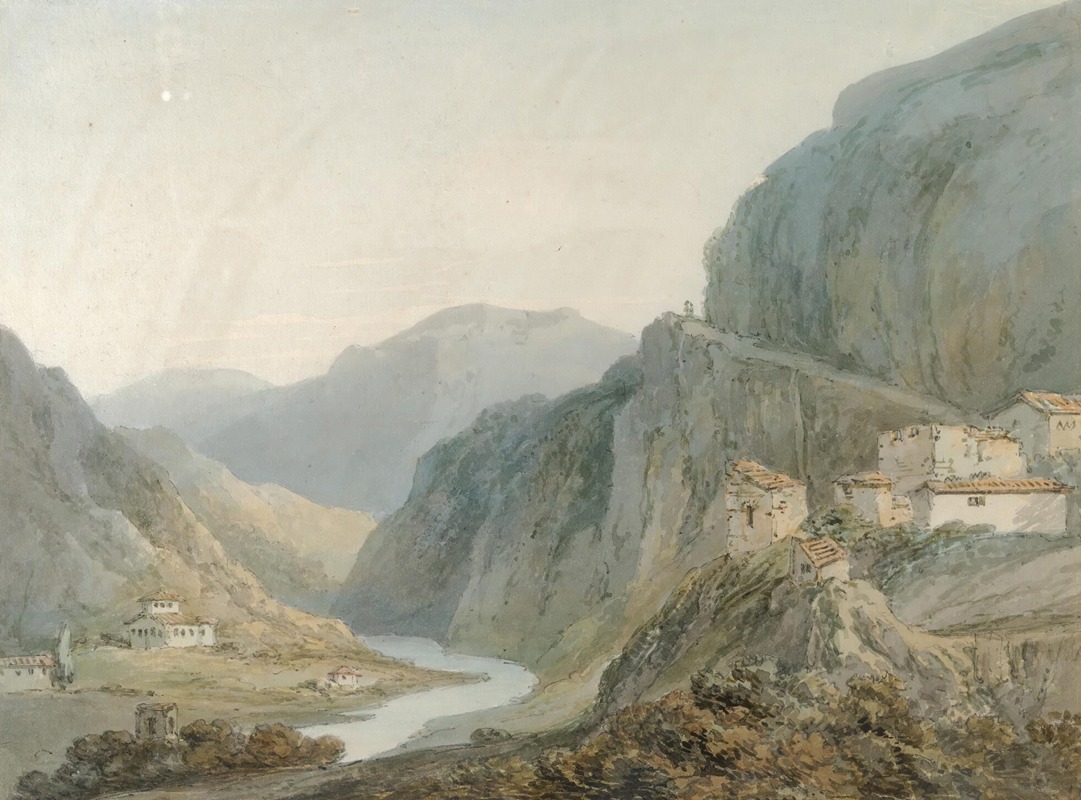
Ascent To The Cascade Of Terni
A hand-painted replica of Joseph Mallord William Turner’s masterpiece Ascent To The Cascade Of Terni, meticulously crafted by professional artists to capture the true essence of the original. Each piece is created with museum-quality canvas and rare mineral pigments, carefully painted by experienced artists with delicate brushstrokes and rich, layered colors to perfectly recreate the texture of the original artwork. Unlike machine-printed reproductions, this hand-painted version brings the painting to life, infused with the artist’s emotions and skill in every stroke. Whether for personal collection or home decoration, it instantly elevates the artistic atmosphere of any space.
Joseph Mallord William Turner, an eminent British artist known for his expressive colorization, imaginative landscapes, and turbulent marine paintings, created "Ascent to the Cascade of Terni" during the early 19th century. This work is part of Turner's extensive body of work that captures the sublime beauty and power of nature, a recurring theme throughout his career.
Turner was born in 1775 in London and became a prominent figure in the Romantic movement. His travels across Europe greatly influenced his work, providing him with a wealth of inspiration from diverse landscapes. The Cascade of Terni, also known as Cascata delle Marmore, is a man-made waterfall created by the ancient Romans, located in Umbria, Italy. It is one of the tallest waterfalls in Europe and has been a popular subject for artists and poets due to its dramatic and picturesque scenery.
"Ascent to the Cascade of Terni" reflects Turner's fascination with the interplay of light, water, and landscape. The painting captures the dynamic movement of water cascading down the rocky terrain, enveloped in a mist that diffuses the light and creates a luminous atmosphere. Turner's technique in this piece exemplifies his mastery of watercolor, a medium he often employed to convey the ephemeral qualities of light and atmosphere.
The composition of the painting is carefully structured to lead the viewer's eye through the scene, beginning with the foreground's detailed depiction of the rocky path ascending towards the waterfall. This path invites the viewer to embark on a visual journey, mirroring the physical ascent to the cascade itself. The middle ground features the waterfall, rendered with energetic brushstrokes that convey the force and motion of the water. In the background, the landscape recedes into a hazy distance, emphasizing the vastness and grandeur of the natural world.
Turner's use of color in "Ascent to the Cascade of Terni" is particularly noteworthy. He employs a palette of soft blues, greens, and earth tones to evoke the serene yet powerful presence of the waterfall and its surroundings. The subtle gradations of color and the interplay of light and shadow create a sense of depth and dimensionality, enhancing the viewer's immersion in the scene.
This painting is a testament to Turner's ability to capture the sublime—a concept central to Romanticism, which emphasizes the awe-inspiring and sometimes terrifying aspects of nature. Through his depiction of the Cascade of Terni, Turner invites viewers to contemplate the beauty and power of the natural world, encouraging a sense of wonder and reverence.
Turner's work, including "Ascent to the Cascade of Terni," has had a lasting impact on the art world, influencing subsequent generations of artists. His innovative techniques and visionary approach to landscape painting paved the way for later movements such as Impressionism. Today, Turner's paintings are celebrated for their emotional depth and technical brilliance, securing his legacy as one of the greatest landscape painters in the history of Western art.
While specific details about the creation and exhibition history of "Ascent to the Cascade of Terni" may not be extensively documented, the painting remains an important example of Turner's exploration of natural phenomena and his contribution to the Romantic movement.






